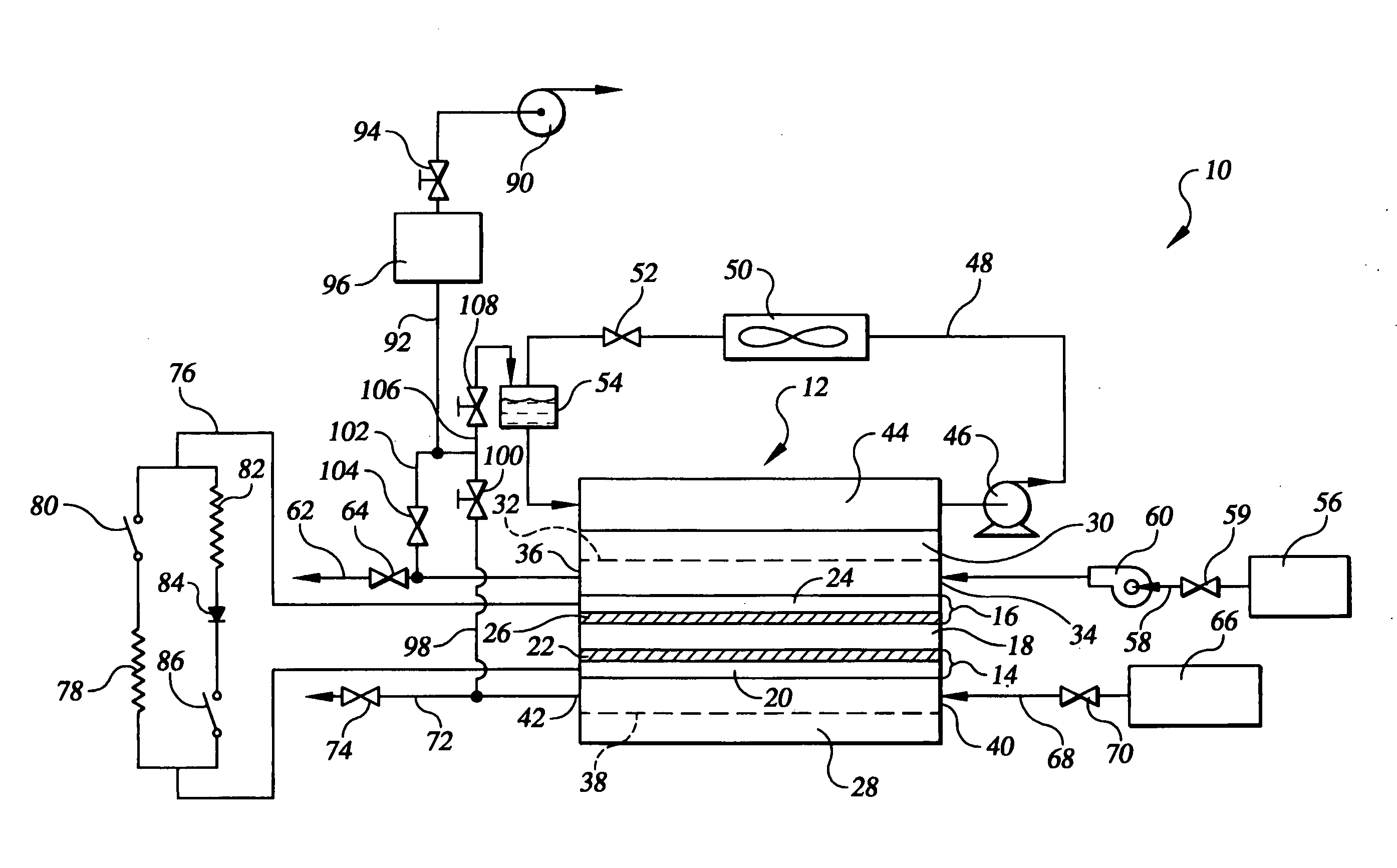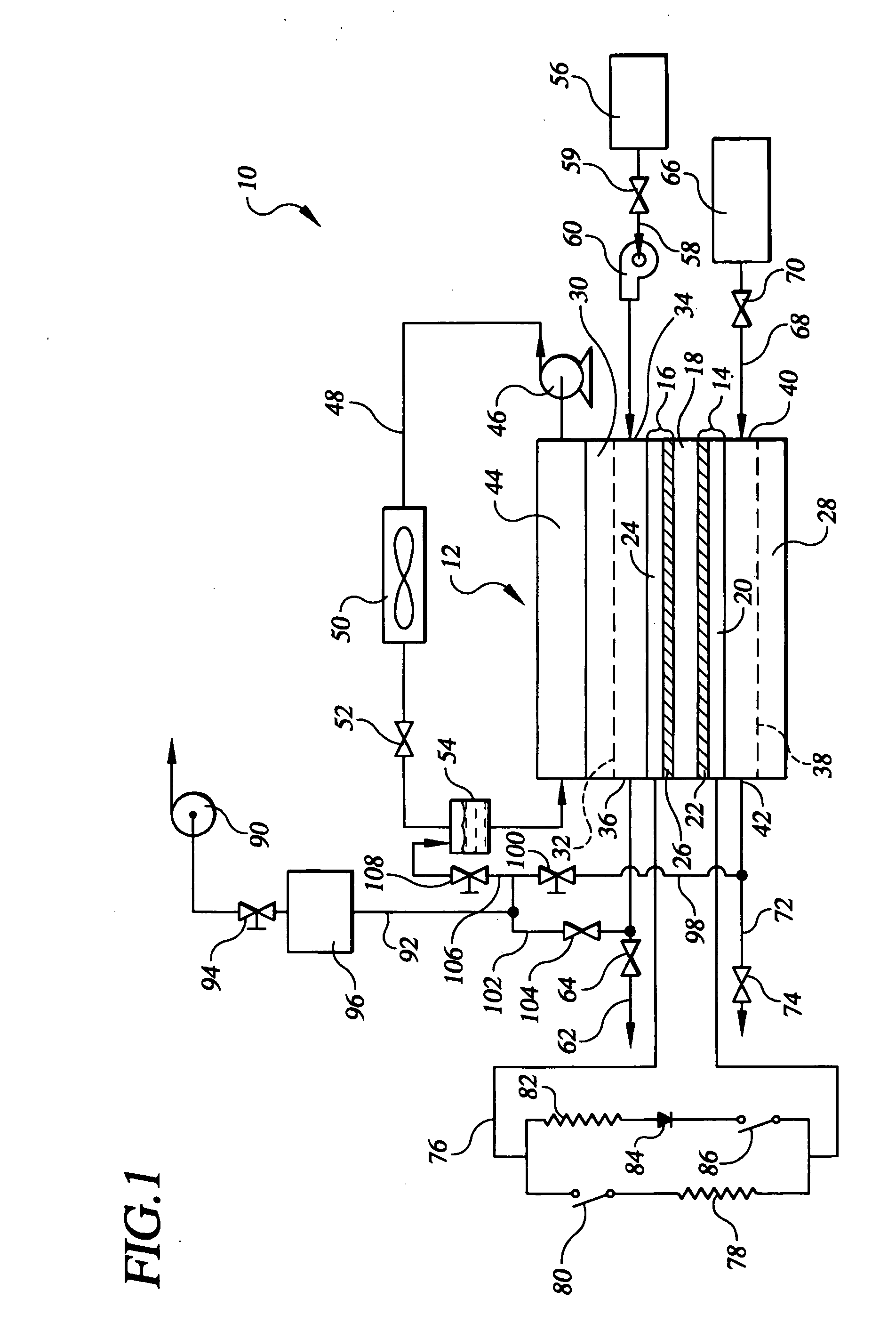Procedure for starting up a fuel cell using a fuel purge
a fuel cell and purge technology, applied in the field of fuel cells, can solve the problems of cathode catalyst layer performance loss, catalyst layer opposite the fuel-air front, catalyst layer oxidation and corrosion, etc., to achieve the effect of reducing the oxidation and corrosion of catalyst support materials
- Summary
- Abstract
- Description
- Claims
- Application Information
AI Technical Summary
Benefits of technology
Problems solved by technology
Method used
Image
Examples
Embodiment Construction
[0015] Referring to the drawings in detail, a vacuum fuel cell system is shown in FIG. 1, and is generally designated by the reference numeral 10. The system includes a fuel cell 12 having an anode 14 a cathode 16 secured to opposed sides of an electrolyte layer 18. The anode includes an anode substrate 20 having an anode catalyst layer 22 disposed on the substrate 20 on a side adjacent the electrolyte layer 18. Similarly, the cathode 16 includes a cathode substrate 24 having a cathode catalyst supported on a carbon support 26 disposed on the substrate on a side adjacent the electrolyte layer 18. The fuel cell 12 also includes an anode flow field plate 28 adjacent the anode substrate 20 and a cathode flow field plate 30 adjacent the cathode substrate 24.
[0016] The cathode flow field plate 30 defines a plurality of oxidant channels 32 extending across the plate 30 forming a cathode flow field for directing flow of an oxygen containing oxidant, such as air, across the cathode flow fi...
PUM
| Property | Measurement | Unit |
|---|---|---|
| absolute pressure | aaaaa | aaaaa |
| absolute pressure | aaaaa | aaaaa |
| pressure | aaaaa | aaaaa |
Abstract
Description
Claims
Application Information
 Login to View More
Login to View More - R&D
- Intellectual Property
- Life Sciences
- Materials
- Tech Scout
- Unparalleled Data Quality
- Higher Quality Content
- 60% Fewer Hallucinations
Browse by: Latest US Patents, China's latest patents, Technical Efficacy Thesaurus, Application Domain, Technology Topic, Popular Technical Reports.
© 2025 PatSnap. All rights reserved.Legal|Privacy policy|Modern Slavery Act Transparency Statement|Sitemap|About US| Contact US: help@patsnap.com


